Thorn Carving Item Number: Af374 from the MOA: University of British Columbia
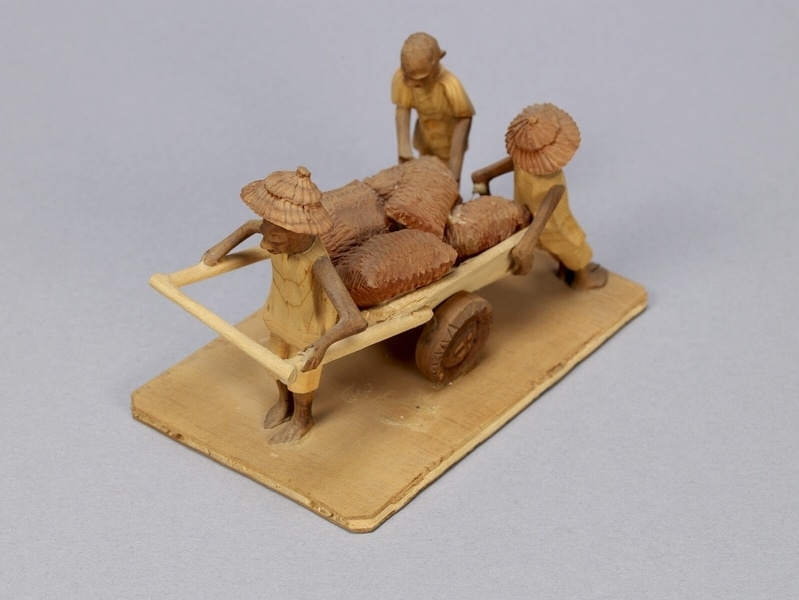
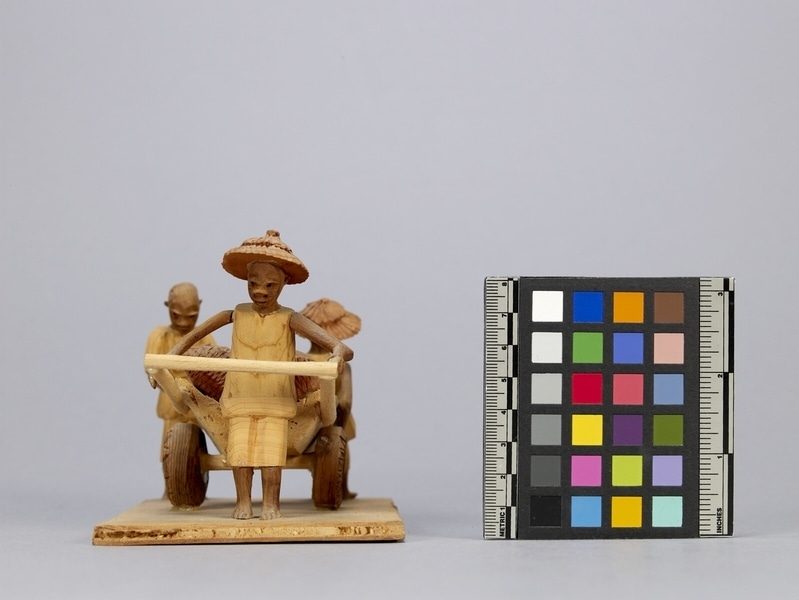
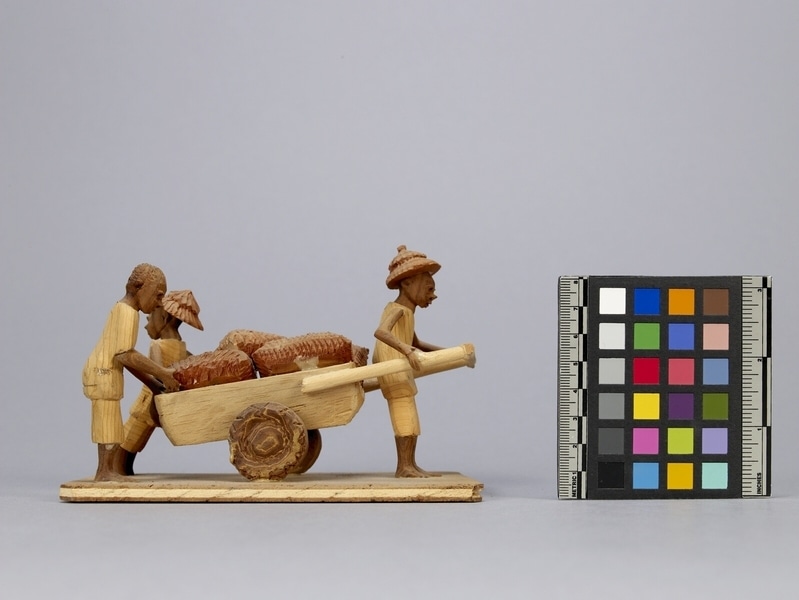
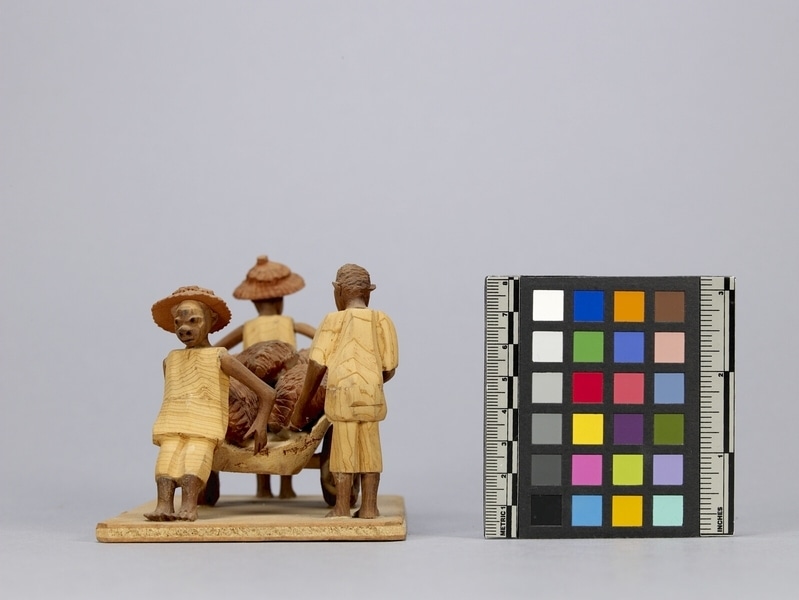
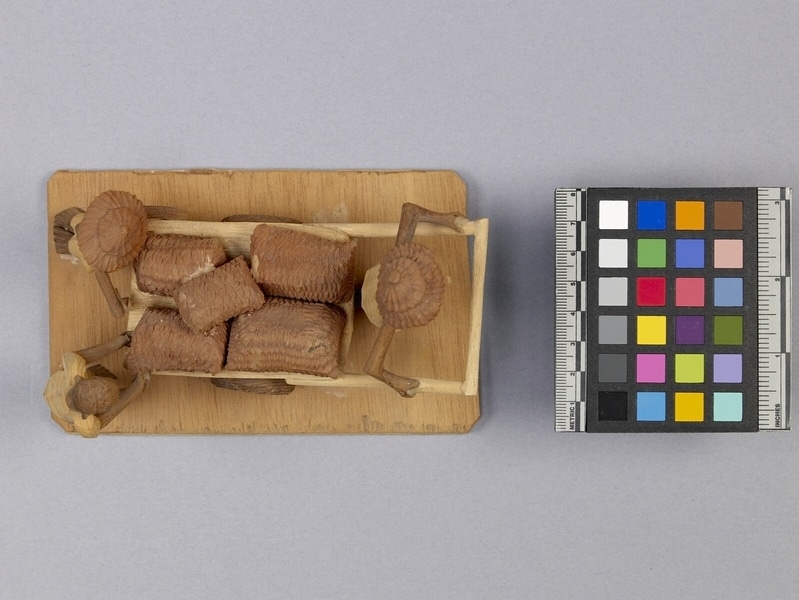
Description
Three figures representing men moving a two-wheeled cart filled with five bags of cocoa beans. One man is wearing a short sleeveless shirt, knee-length trousers, and a two-tiered round hat while he is standing between the shafts of the cart and behind the cross bar with a hand on each shaft. The second is wearing an identical shirt, trousers, and hat. His back leans against the left, rear corner of the cart. The third man is bareheaded standing at the right rear corner of the cart and supporting a bag. He is wearing a loose short- sleeved shirt and knee-length trousers. The cart is a hollowed section of wood, supported on one cross axle with two wheels. The clothing is light yellow-brown. The heads, limbs, and cart wheels are dark brown. The hats, and bags of beans are red-brown. The whole is resting on a plywood base. One of twelve carvings glued to light brown burlap over cardboard. Cart and shafts are light brown wood.
History Of Use
Thorn carvings are miniatures depicting scenes from Nigerian life. This type of carving began circa 1930. Thorns vary in size. They can be as large as 12.7 cm. long and 9.6 cm. wide. They are comparatively soft and easily carved. The light yellow-brown thorn and the dark brown thorn come from the Ata tree; the light red-brown thorn comes from Egun trees. The parts are glued together with viscous paste made from rice cooked with water. They are carved by men.
Cultural Context
craft; tourist art
Narrative
Represents men's activities.
Item History
- Made in Nigeria before 1972
- Collected during 1972
- Owned by Andrew Stewart and Jessie Stewart before February 8, 1980
- Received from Andrew Stewart (Donor) and Jessie Stewart (Donor) on February 8, 1980
What
- Name
- Thorn Carving
- Identification Number
- Af374
- Type of Item
- carving
- Material
- atum thorn, rice adhesive, wood and egun thorn
- Manufacturing Technique
- carved and glued
- Overall
- height 10.0 cm, width 15.0 cm, depth 9.6 cm
Who
- Culture
- Yoruba
- Previous Owner
- Andrew Stewart and Jessie Stewart
- Received from
- Andrew Stewart (Donor) and Jessie Stewart (Donor)
Where
- Holding Institution
- MOA: University of British Columbia
- Made in
- Nigeria
When
- Creation Date
- before 1972
- Collection Date
- during 1972
- Ownership Date
- before February 8, 1980
- Acquisition Date
- on February 8, 1980
Other
- Item Classes
- carvings & sculpture
- Condition
- good
- Accession Number
- 0590/0060